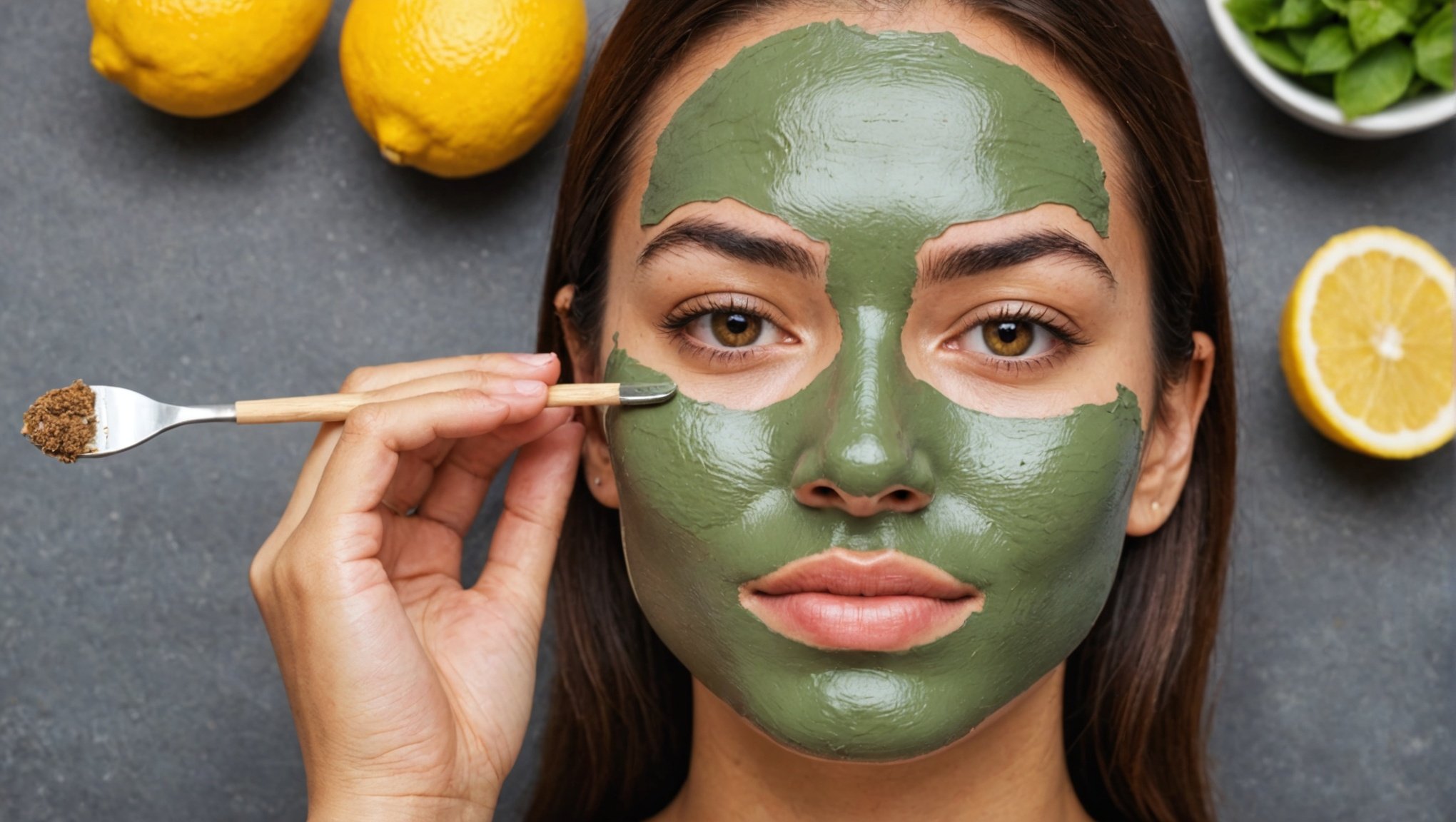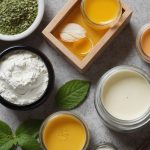When it comes to beauty regimens, a face mask is a popular go-to product for many. While store-bought masks are convenient, they can often be expensive and full of chemicals. Fortunately, you can make your own DIY face masks at home using simple kitchen ingredients. They are natural, affordable, and can be tailored to suit your specific skin needs. For those dealing with oily skin, it can be difficult to manage the excess oil and prevent acne. However, homemade masks can be a lifesaver. Here’s how to craft your own face mask specifically for oily skin using kitchen ingredients.
Why Homemade Masks are Beneficial?
Before we dive into the recipes, let’s take a moment to understand why homemade masks are beneficial for your skin. Commercial face masks are often packed with synthetic ingredients which can be harsh on delicate facial skin. On the other hand, DIY masks made from natural ingredients present in your kitchen are gentler, chemical-free and cater specifically to your skin type.
Also to discover : Which Essential Oils Are Most Effective for Scar Diminishment?
DIY Oatmeal and Honey Mask
One of the best masks for oily skin is the oatmeal and honey mask. Oatmeal is great for the skin because it absorbs oil, exfoliates dead skin and soothes irritation. Honey, on the other hand, is a natural antibacterial which is great for acne treatment and prevention.
To make this mask, you will need:
Also read : How to Integrate Vintage Accessories into a Modern Corporate Wardrobe?
- 2 tablespoons of oatmeal
- 1 tablespoon of honey
- A little water
Mix the oatmeal and honey together in a bowl. Add a little water to make the mixture into a paste that can be easily applied to the skin. Apply the mask to your face, ensuring to avoid your eyes. Leave the mask on for 15-20 minutes and then rinse off with warm water.
DIY Lemon and Yogurt Mask
Lemon and yogurt make a fantastic combination for a face mask. The citric acid in lemon helps to balance oil secretion and lighten blemishes, while yogurt provides a calming effect and smoothens the skin.
Here’s what you’ll need:
- 1 tablespoon of fresh lemon juice
- 2 tablespoons of yogurt
Mix the lemon juice and yogurt together until well combined. Apply to your face, making sure to avoid your eyes. Let the mask sit for about 15 minutes, then rinse off with warm water.
DIY Green Tea and Rice Flour Mask
A mask made of green tea and rice flour can work wonders on oily skin. Green tea’s antioxidant properties can reduce sebum production, while rice flour can help in skin brightening and oil absorption.
You will need:
- 1 tablespoon of green tea (you can use brewed tea leaves)
- 2 tablespoons of rice flour
Mix the green tea and rice flour together to form a paste. Apply the mask on your face, avoiding the eyes. Leave it for 15-20 minutes, then rinse off with cold water.
DIY Aloe Vera and Tea Tree Oil Mask
Aloe vera has been used for centuries as a skin healer and hydrator, perfect for oily skin. Tea tree oil is known for its potent antibacterial properties, making it effective against acne-causing bacteria.
To make this mask, you need:
- 2 tablespoons of aloe vera gel
- 2-3 drops of tea tree oil
Mix the aloe vera gel and tea tree oil together. Apply the mixture to your face and let it sit for about 20 minutes. Rinse off with cold water.
DIY Turmeric and Gram Flour Mask
Turmeric has anti-inflammatory and antioxidant benefits that can help improve your skin’s luster. Gram flour helps remove dead skin cells and absorbs excess oil.
To make this mask, you need:
- 1 tablespoon of turmeric
- 2 tablespoons of gram flour
Mix the turmeric and gram flour together with a little water to create a paste. Apply it to your face and leave it on for about 15-20 minutes. Rinse off with lukewarm water.
Remember, the key to a successful DIY face mask is consistency. These masks are natural, so they need to be applied regularly to see visible results. Also, remember to do a patch test before applying anything new to your skin to ensure it doesn’t cause any adverse reactions.
Tips and Precautions When Using Homemade Face Masks
Now that we’ve discussed several DIY face masks for oily skin, it’s important to bring up some tips and precautions when using these natural remedies. While these face masks are made with gentle, natural ingredients, everyone’s skin is unique and can react differently.
Start by doing a patch test. Before applying the full mask to your face, apply a small amount to your wrist or the inside of your elbow. Wait for 24 hours to see if any adverse reaction occurs. If you develop a rash, itching, or other irritations, do not use the mask on your face.
Remember, natural doesn’t always mean non-irritating. For example, lemon juice is natural but highly acidic, which may cause skin irritation for some. It’s always better to dilute it with other ingredients like yogurt or honey. Also, never leave a mask with lemon juice on your skin for more than 15 minutes.
Be careful with the mask application. Avoid the eye area as the skin there is thinner and more sensitive. Use warm water to wash off the mask. It helps to open up pores and remove the impurities thoroughly. Be gentle while rinsing off the mask to avoid causing any damage to your skin.
Lastly, always moisturize after masking, even if you have oily skin. While these masks are designed to control oil, they can leave your skin feeling a bit dry. Using a light, oil-free moisturizer after rinsing off your face mask will help restore your skin’s natural moisture balance.
Conclusion
Homemade face masks can be an effective, affordable, and natural way to manage the challenges of oily skin. Whether it’s an oatmeal and honey mask or a more exotic aloe vera and tea tree oil mask, these DIY face masks offer a variety of benefits. They can soothe, exfoliate, brighten, and balance your skin, delivering a fresh and healthy complexion.
Remember that patience and consistency are the keys. Natural remedies take time, and since these masks are free from harsh chemicals, you might not see immediate results after one use. However, if you’re consistent with your skin care routine, you’ll likely start to see visible improvements over time.
Always keep in mind the potential for skin irritation and remember to perform a patch test before introducing a new ingredient to your regimen. Although these masks are typically gentle on the skin, everyone’s skin is unique and can react differently to different ingredients.
By understanding your skin type and the benefits of each ingredient, you can craft the perfect DIY face mask for your oily skin right in your own kitchen. Happy masking and here’s to healthier, happier skin!











